The dangers of electricity to humans
The dangers of electricity to humans

Electricity is potentially dangerous and has inherent risks, especially as a result of circuit failure, misuse, inexperienced handling or negligence. The effects on humans, devices and other objects can be devastating. When installing an electrical circuit, extending an existing circuit, or looking for a new office or guest house, a full facility assessment is recommended. Complete evaluations must ensure that the circuit can safely handle the required current flow, adequate protective devices are provided, the circuit is grounded, and there are no potential hazards.
For equipment, the risks of an incorrectly installed or secured circuit are short circuits and overloads. For people, insulation faults create risks resulting in direct or indirect contact with electrical currents.
Electrical diamond
A short circuit is a strong overcurrent that lasts for a short time. In single-phase systems, a short circuit occurs when the phase and neutral wires accidentally touch; In three-phase systems, this can happen when there is a connection between two phases. For direct current, a short circuit may occur when the electrodes touch.
A short circuit can also occur when there is a break in the insulation surrounding the cable, when two conductors come into contact via an external conductor (eg: a metal hand tool), or when water gets between line connections, causing the resistance of the circuit to approach zero and thus It reaches high values (U=RxI) very quickly.
Physical damage may expose cables within the insulation, while a sudden increase in conductor temperature may cause the insulation and copper core to melt.
Overload
An overload is caused by a weak overcurrent that occurs over a long period of time. Overloads may be caused by a current that is too high to be delivered through the relative diameter of the connecting cable.
There are two types of overload:
- Normal overloads, which can occur when starting the engine. Normal overloads are short-lived and do not pose any danger.
- Abnormal overloads occur when too many devices are connected to the same circuit or port at the same time, or when a terminal is not connected properly. These problems are common in older buildings with very few outlets, but can occur in any installation due to the increased number of electrical appliances. The current is lower in an abnormal overload than in a short circuit, but the results are identical: overheated wires, damaged insulation, and a higher risk of fire.
Insulation faults
Insulation faults occur due to damage to the insulating material in one or more phase conductors. These problems can result in electrical shocks from current-carrying lines, and if the damaged conductor comes into contact with a metal surface or sheath, it can also cause electrocution in contact with appliances and equipment.
Failure in the insulation can also be caused by moisture resulting from water damage or natural moisture in the walls.
These malfunctions can be very dangerous, especially when a person is in direct contact with a connector, metal enclosure or faulty electrical device. In any case, the human body becomes part of the electrical circuit, causing an electric shock.
Injury resulting from exposure to electricity
The damage to the human body is caused by 3 factors:
- The amount of current flowing through the body.
- The path for electricity to enter the body.
- The duration of exposure of the body to electricity.
The table and image below detail the general response of the human body to different strengths of electric current. The arrows show the flow of electricity from the entry point to the nearest exit point. The blue arrow shows the current flowing through the head/heart and then to ground, which is the most lethal.
| Exposure level | Interaction | |
|---|---|---|
| More than 3 mA | Painful shock | |
| More than 10 mA | Muscle spasm – risk of “not being able to let go” | |
| More than 30 mA | Lung paralysis, usually fatal | |
| More than 50 mA | Ventricular fibrillation, usually fatal | |
| 100 mAh to 4 amps | Definite ventricular fibrillation, fatal | |
| More than 4 amps | Cardiac paralysis, severe burns |
safety equipments
To avoid or minimize the harmful effects that current can have on the human body, it is highly recommended to use protective equipment and take precautions when handling electrified circuits and equipment.
- Rubber gloves – to prevent hands from direct contact with current. It should be sticky and have excellent grip.
- Tight-fitting trouser legs and sleeves – to prevent accidental contact or being pulled into hazardous equipment.
- Remove the rings from the fingers.
- Rubber boots – to prevent the body from forming a complete conductive electrical circuit.
Electrical hazards
If an installation is set up properly, grounded and well maintained, electrical shorts or other problems should not be a problem. If the basics of installation, handling and maintenance are neglected, many hazards can occur.
| Risks | the description | Possible sources |
|---|---|---|
| Shocks | Electric shock occurs when the human body becomes part of the path through which current flows.
The immediate result is electrocution. The indirect result is exposure to injury resulting from a fall or uncontrolled movement. |
|
| Burns | Burns can occur when a person touches electrical wires or equipment that is energized. | |
| Arc blast | Arc blasts are caused by high-intensity currents flowing through the air. This can be caused by accidental contact with active components or equipment malfunction.
The three primary risks associated with arc blast are:
|
|
| Explosions | Explosions occur when electricity provides an ignition source for an explosive mixture in the atmosphere. | |
| Fires | Electricity is one of the most common causes of fires in both the home and workplace. Defective or misused electrical equipment is a leading cause of electrical fires. |
Danger signs
Safety signs keep people aware of dangers. It is important to locate them accordingly so that people working around hazardous locations can take appropriate precautions. They must be located in clear places, and include the maximum possible amount of information about the source of the hazard and its characteristics. In the event of an accident, this information can be valuable information.
Examples of these signs include:
| Voltage warning labels | Electrical voltage symbol | Warning: Danger of death from electricity | Turn off when not in use |
|---|---|---|---|
| Electric shock warning | High voltage warning | Overhead cable warning | Warning about electrical wires |
| Warning about buried cables | Warning about mains conductor voltage | Danger – “No Entry” sign | WARNING – Insulate before removing cover |
Electrical fires
Electricity is one of the most common causes of fires. Electric current and the chemical reaction of fire are both methods of transferring energy; While electricity involves the movement of negatively charged electrons, flame is formed from the scattering of both positive and negative ions. Therefore, faulty wiring connections can, for example, cause arcing and electrical sparks that can easily turn into flame if conditions exist for a fire, such as oxygen, heat or any type of fuel.
Energy sources directly associated with electrical fires can be any of the following:
- Defective wiring connections.
- Overloaded devices.
- Electrical diamond.
- Power cord damaged.
- Overloaded electrical outlets.
- Incorrectly installed lighting fixtures.
Part of avoiding an electrical fire involves properly sizing, using and maintaining the electrical system. However, hazards can occur regardless, and fire suppression equipment must be in place. Fire extinguishers are the most reliable way to do this, but the appropriate fire extinguisher must be used or the extinguisher itself may be ineffective.
Categories of fire extinguishers suitable for each area:
| American | European | United kingdom | Australian/Asian | Fuel/heat source |
|---|---|---|---|---|
| Class A | Class A | Class A | Class A | Ordinary combustible materials |
| Class B | Class B | Class B | Class B | Flammable liquids |
| Class C | Class C | Class C | Flammable gases | |
| Class C | Unclassified | Unclassified | Class E | Electrical equipment |
| Class D | Class D | Class D | Class D | Combustible metals |
| Class K | Class F | Class F | Class F | At the kitchen level (oil or fat used in cooking) |
Electrical fires must be extinguished with a non-conductive substance, as opposed to water or foam found in Class A fire extinguishers. If someone tries to put out an electrical fire with something like water, there is a high risk of electrocution because water is a conductor. Class C fire extinguishers use monoammonium phosphate, potassium chloride or potassium bicarbonate, which do not conduct electricity. Another option is a Class C fire extinguisher containing carbon dioxide (CO2). Carbon dioxide is great for putting out fires because it eliminates the oxygen source of the fire, and also reduces the heat of the fire because the carbon dioxide is cold when it exits the fire extinguisher.
protection
Prevention is the most effective measure to mitigate risks. Some of these precautions that planning officials can take when working around electricity include:
- Never plug appliances rated at 230 volts into a 115 volt outlet.
- Place all lamps on flat surfaces and away from objects that can burn.
- Use bulbs that match the rated wattage of the bulbs.
- Do not overload an electrical outlet by plugging multiple devices into one outlet using any device.
- Do not tug or pull on any electrical cords.
- If the outlet or electrical switch is warm, turn off the circuit and call an electrician to check the system.
- Follow the manufacturer’s instructions for connecting a device to an electrical outlet.
- Avoid running extension cords under rugs or through doorways.
- Do not connect the cord of an older electrical appliance to a newer cord.
- Replace and repair frayed or loose wires in all electrical appliances.
- Keep all electrical appliances away from water.
- Contact the Electricity Authority if any damage occurs to overhead cables, outdoor panel boxes or trees touching high voltage lines.
- Review architectural drawings and/or contact the electrical authorities before doing any work that involves digging.
- Pay attention to all warning signs indicating electrical hazards.
- Make sure to place the fire extinguisher where the risk of danger is greatest.
- Always wear safety equipment when around electrical equipment.
If you have any inquiry, please contact us freely and we will be happy to serve you.

Jezli website for purchasing electrical appliances
When we say Jeezly website, we are talking about one of the most famous Arab websites that was able, in a very short period of time, to achieve a very large demand for purchases from it by people from various parts and sectors of the Arab world.
On the Jeezly website, you will find a joint look and all the products that you may need in your home, starting with those for kitchens or bathrooms, but even those for gardens, you will find them on this wonderful site.
So, if you were lost before and did not know where to go to buy your products on the Internet, now you have the perfect solution, and all you have to do is go to the Jezli website and start choosing the products you want.
 What are the features of Jeezly ?
What are the features of Jeezly ?
Since we are talking about a site that is preferred by many people around the world, there is no doubt that it is a site full of various features and characteristics. Therefore, we have decided to devote our next paragraph to pointing out the most prominent features of the Jezli site.
One of the most prominent features of the site is the proportionality of prices. On the Jeezly website, you do not have to worry about the imaginary prices of the products, as is the case with most sites that display their products on the Internet.
The price of delivering products is very reasonable and not expensive, and the site accepts delivery to various countries, without forgetting that it accepts free shipping on some products.
One of the features of the site is also the high quality of its products, as it is impossible to find a poor quality product. Rather, the Jezli website deals with the major companies, Philips, for example, and other famous brands, so you must remove from your mind the idea of the poor quality of one of the products. Another advantage of the site is that it does not specialize in one type of product, but rather you will find various types of products on it, for example, electrical appliances, hand tools, mechanical devices, paints, packages for establishing apartments, and many other types.
Jeezly website also accepts what is known as the shopping cart, which makes it easy for you to filter the products you want to buy and put them in one package in order to be able to pay with the click of a single button.
Accepts multiple payment methods.
We are pleased that you visit our social media pages, where we publish exclusive offers on our website.
Our Facebook page is here .
Our Twitter account is here .



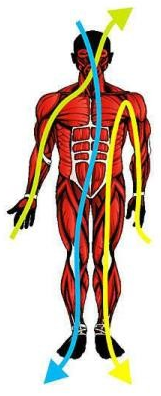


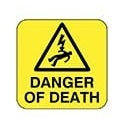
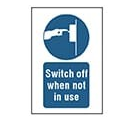
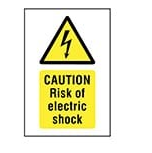
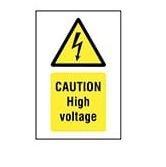
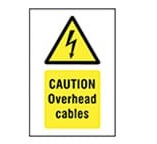


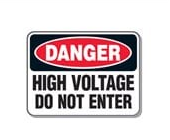
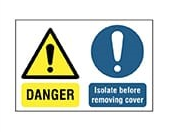








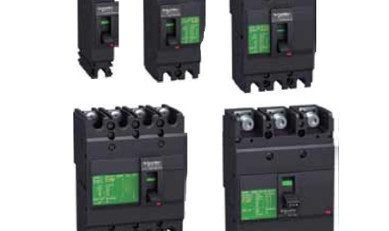


Leave a Reply
You must be logged in to post a comment.